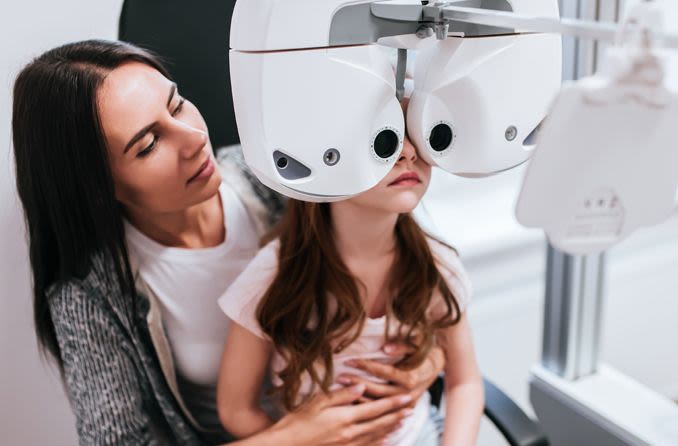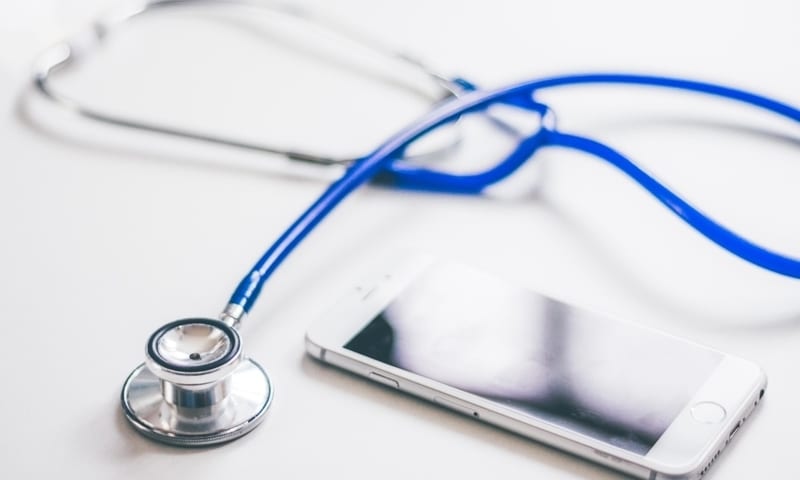Table of Contents
Eye Exams: What to expect
An eye exam is a simple and painless procedure. An optometrist or ophthalmologist will first question you about your medical history and then proceed to check for any eye diseases such as cataract, glaucoma, etc.
The doctor will conduct additional tests to assess your color perceiving ability as well as 3D and peripheral (side) vision.
The doctor will perform the test using a machine that shines a light into the eye to take a picture of the back of the eye. Your doctor may apply a solution in your eyes to help them stay dilated.
This is followed by a vision test with a letter board. A phoropter is used to help determine your visual ability. Different lenses are used to assess how clearly you can see through them. Once complete, the doctor will write you a prescription for corrective lenses if you need them.
This routine procedure takes between 10 to 25 minutes and should be an essential part of your annual medical checkups.
Children are advised to get an annual eye exam as soon as they start school.
A question often asked in this regard is: should I go to the eye doctor if I have perfect vision?
The answer is yes.
According to the American Optometric Association, everyone under the age of 60 should get an eye exam every two years (annually for those older than 60). This includes people without any eyesight issues as well.
Here are five reasons why you should go to the eye doctor despite having perfect vision.
Quick and simple
Eye exams are very quick, so you do not have to set aside a whole day for them. Make sure to book an appointment if you are looking to save on waiting time as well.
Easily affordable
Most people assume that eye exams are expensive since you are required to pay the doctor’s fee and buy new glasses on every visit as well.
The amount you pay for a routine eye exam is not the same as the amount you pay for consulting a physician.
As for the glasses, if your prescription does not change, you do not need new glasses.
If you are concerned about costs, you must know that most health insurance plans cover eye exams under visual insurance coverage, which entitles you to a free annual eye exam. Some insurance plans include the cost of glasses as well.
Check your coverage components with your insurance provider.
Detect problems early on
An annual vision-screening test and a detailed eye exam enable your eye doctor to detect issues, if any, early on.
Detecting problems early on can help slow them from progressing into more pressing concerns. Early diagnosis also means reduced treatment time and a faster recovery period.
Eye problems such as glaucoma and macular degeneration are two such conditions that show no symptoms in their early phases. In their later stages, they may result in a significant loss of vision. A consultation with your eye doctor can help detect such problems early on.
Prevent unnecessary strain on the eyes
Many amongst us who wear prescription glasses tend to visit the eye doctor once, get their prescription, and then disappear for years.
Your vision is prone to change over time, as is your prescription. While an outdated prescription does not damage the eyes, it can lead to other complications, most prominently eye strain.
Eye strain results with prolonged use of an old or wrong prescription lens. Wearing the wrong lens pushes the eyes to work harder to clear the image in front. Prolonged eye strain can further lead to headaches, vertigo, etc.
Help detect other health problems
Your eye health can provide valuable information about any underlying health issues that may be taking root in your system.
Routine eye exams can help detect various conditions, including:
- Diabetes: One of the earliest indicators of diabetes is changes in the blood vessels of the eyes. If these vessels start to take on a yellowish tint or start leaking blood, there is a possibility you may have diabetes.
- Hypertension: Hypertension, or high blood pressure, harbors an impact on your eyes’ blood vessels as well. If there are crimps or bends on the tiny vessels of the eyes, your blood pressure may be raised.
- Autoimmune Disorders: An inflamed or swollen eye can point to many conditions, including an autoimmune disorder such as Lupus.
- Hyperlipidemia: Hyperlipidemia, or high blood cholesterol, can present itself in the form of cornea yellowing.
- Thyroid Disorders: A prominent indication of thyroid disease is eyes bulging out of their sockets.
- Tumors: Tumors of the head and neck region may present with signs such as droopy eyelids and altered pupil shapes.
- Cancer: Cancer can be detected based on any changes in eye shape. If your doctor witnesses an odd eye shape, they will refer you to a specialist. Eye exams also help detect skin cancer as some skin carcinomas start developing on the eyelids.
How to keep your eyes protected
Eye protection is an integral part of self-care. Here are some simple ways in which you can keep your eyes protected.
- Wear sunglasses: Sunglasses protect the eyes from the harmful UV rays of the sun. Not only does this help prevent sun damage, but it prevents eye strain as well.
- Eat healthily: A healthy and balanced diet rich in omega-3 fatty acids and leafy green vegetables is an excellent way to boost and maintain eye health.
- Take screen breaks: Staring at screens for prolonged periods causes eye strain. However, since we live in a digitalized world, it is impossible to avoid screens. Therefore, screen breaks after every 20 to 30 minutes are critical to ensure that your eyes are not subjected to constant pressure.
- Quit smoking: Smoking has been studied to result in an array of eye problems such as cataracts, macular degeneration, permanent optic nerve damage, etc. Most of the Eye Physicians of Austin recommend quitting smoking as it will not only help eye health but prevent other health issues from developing as well.
Note: Age-related macular degeneration is the leading cause of vision loss for Americans aged 65 and older. It affects more than 10 million Americans.
Parting thoughts
Visiting the eye doctor may seem like a tedious and unnecessary feat; however, its benefits outweigh the minor inconveniences. Getting them checked regularly gives you the best possible shot at maintaining 20/20 vision as well as overall body health for as long as possible.
Your vision is one of your most treasured senses. Take care of your eyes by protecting them and visiting an eye doctor regularly to avoid any complications in the future.
Also Read: 9 Morning Routines to kick start the day in a healthy way




